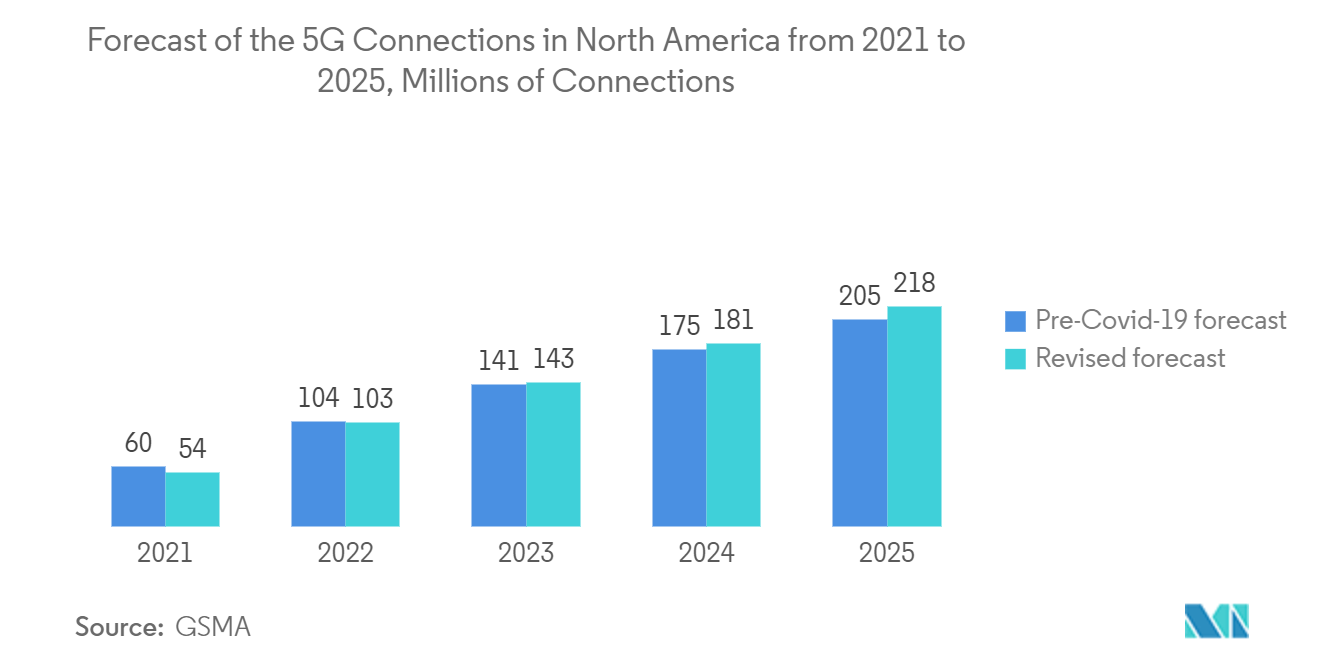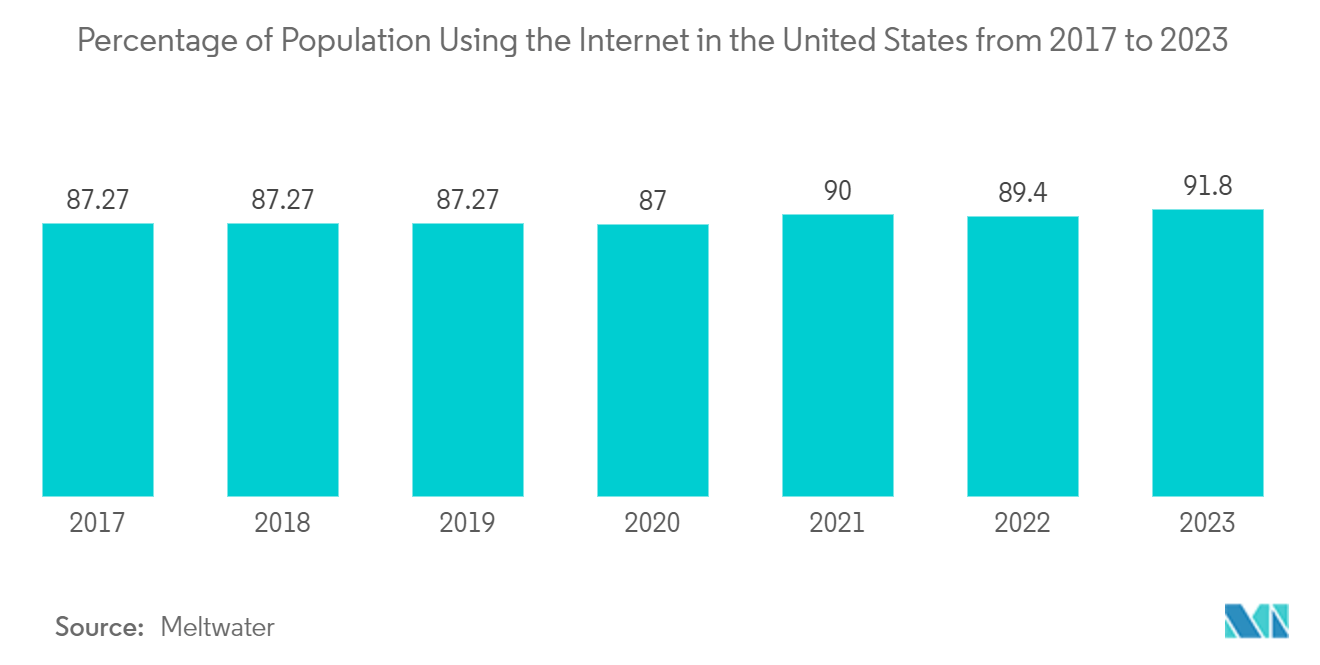Market Trends of North America WiGig Industry
Networking to Hold a major share of the Market
- The WiGig technology supports direct mode, which means the home, enterprises, and service providers are switching to a network for the replacement of cables as well as infrastructure networking. This is a critical point when WiGig in the 2.4 GHz and 5Ghz bands 802.11n and ac would be able to move around dynamically from conventional WiFIs into or across the triband connectivity network. That's a big feature because there are likely to be gaps in coverage of WiG when it comes out into the house.
- Moreover, The WiGig market could offer opportunities for growth due to the increasing number of Internet of Things devices. However, it leads to significant overhead costs, high energy consumptions, and low throughput of WiGig2D networks in the use of direct beamforming training during DND2D neighbor discovery.
- North America has been extensively investing in its 5G infrastructure in order to cover most remote places. The use of a 60GHz band has a vital importance in 5G network scaling and can be densified through the addition of small-cell wireless backhaul. In comparison with a fiber connection, WiGig has a cost-effective advantage by using wireless small-cell backhaul.
- The development of WiGig chipsets was a collaboration between Intel and SK Telecom. Both companies have joined forces to advance their efforts with the Anchorbooster Cell technology, which they state as one of the key technologies for 5G that allows seamless transmission of large amounts of data through a combination of LTE and WiGig networks. The two companies have also mentioned that they would apply Mobile Edge Computing technology on the anchor-booster cell to enhance the quality of experience further and to enable the development of new business models for enterprises and critical verticals.
Given the significant decrease in the count of connected devices and personal computers observed in previously high-traffic areas, it is evident that the impact of the COVID-19 pandemic on telecommunications services and traffic is noteworthy. As a result of people staying at home and the surge in remote work, there has been a reduction in the number of connected mobile devices and PCs, with a simultaneous increase in the utilization of home Wi-Fi networks by American consumers.

United States to Hold the Highest Market Share
- In order to cover the majority of these isolated areas, the region is investing heavily in its 5G infrastructure. The 60 GHz band has a pivotal role to play in the deployment of 5G networks and can also be made densable by adding small cell wireless backhaul. Compared to the fiber connections, WiGig's cost-effectiveness is due to its use of Wireless Small Cell backhaul.
- Furthermore, the market for wireless streaming of content to high-resolution televisions or other monitors in a room is being stimulated by the consumer electronics sector as mobile phones, tablets, and computers could connect with WiGig. For instance, if you have an Asus ROG phone with a display dock that's capable of wireless connectivity to large-screen TVs, WiGig can be used. The TwinView dock is equipped with a 6.59-inch TFT touchscreen, 120Hz touchscreen, a 2nd massive 5,000 mAh battery, and an air conditioning unit.
- The high internet penetration, along with large smartphone users in the region driven by the United States, is expected to drive the demand for Wi-Fi with high speed in gigabytes using WiGig. North America is quickly migrating toward multi-gigabit, residential internet access, primarily using fiber to the home. The economic feasibility of extracting more bandwidth from existing networks using DOCSIS 3.1 is trending with the real opportunity of wireless and speed, by which the demand for WiGig is increasing in this region.
- In addition, the FCC stated that in order to create a 5G network, there must be at least 800,000 RF antennas set up throughout the country, three times as large as what is currently available. This indicates that in the forecast period, there may be an opportunity to install WiGig chips for 5G network expansion across the region.

